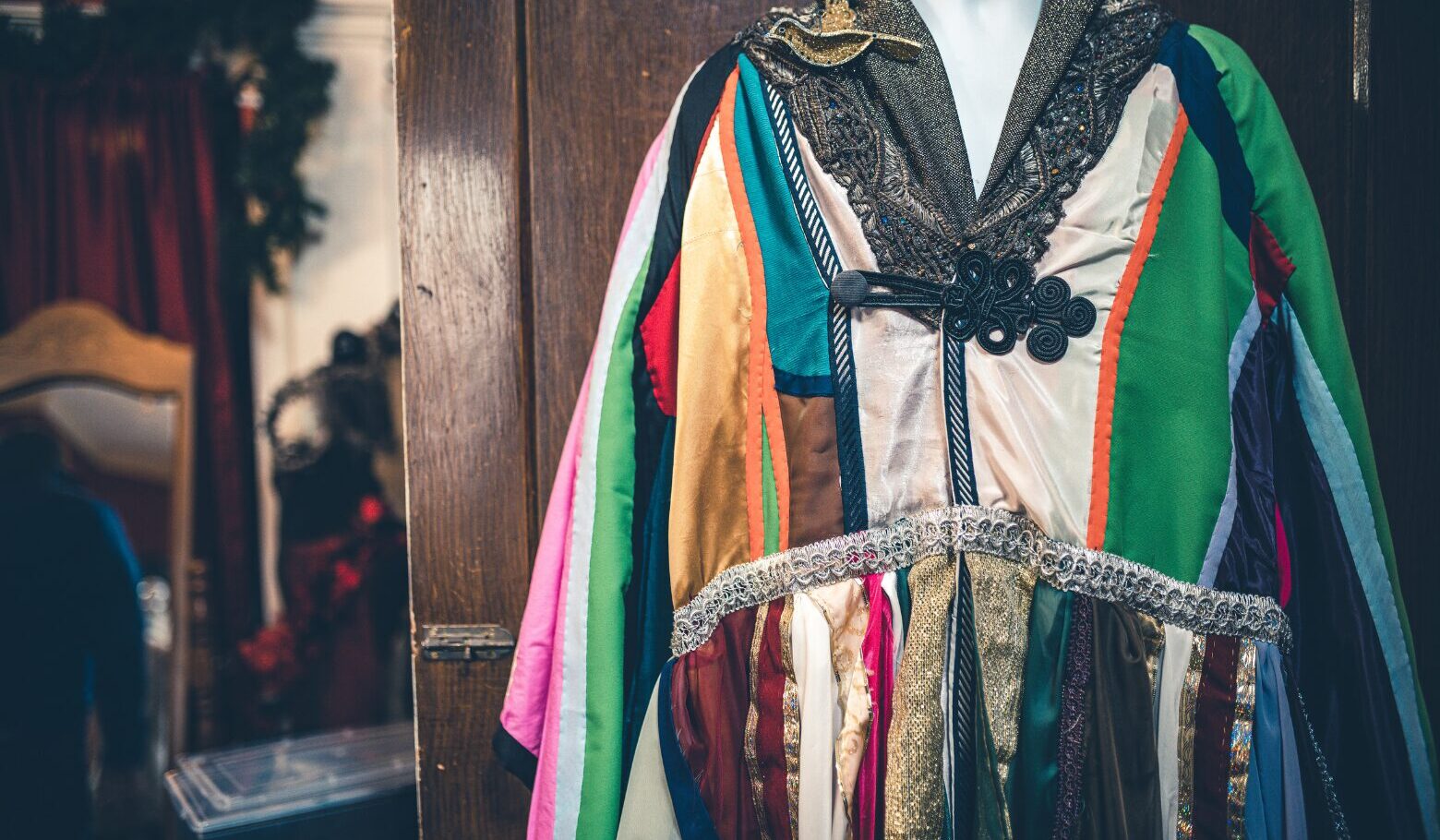Dr. Madeline Taylor: Collaboration, Costume, and Creative Technology

Meet Dr. Madeline Taylor — costume designer, educator, and researcher whose impact is shaping both the stage and the classroom. With over 90 productions to her name and a passion for creative collaboration, she bridges practical craft with academic inquiry to explore how we can work better—together. As co-director of The Stitchery Collective and a Marie Skłodowska-Curie Fellow, Madeline is pushing the boundaries of costume through sustainability, emotional intelligence, and cutting-edge technology.
In this preview, join Dr. Madeline Taylor and Anna Robb as they unpack the shifting landscape of costume design, the role of emotional intelligence in creative collaboration, and the exciting ways technology is reshaping the industry.
Take a listen to this exclusive excerpt—and be sure to catch the full episode when it drops next week!
What’s the current state of costume design—are we seeing innovation, or is it rooted in tradition?
Costume practice is built on a deep well of traditional techniques—sewing machines, pattern-making methods, and overlockers that have been around for decades. These technologies are so embedded in the work that we often forget they are technologies. But the field is far from static. Around the world, costumers are experimenting with digital tools, innovative materials, and structural inventions. Costumers often have a “growth mindset” due to the pace of production cycles—every new show demands skill development, so the field is in constant evolution, even if that’s not always visible to audiences.
How are historical accuracy and creative license balanced in period productions like Bridgerton?
Bridgerton is a great example—it doesn’t aim for strict historical accuracy but leans into aesthetic expression. Costumers operate along a spectrum, from obsessively accurate (down to custom-woven fabrics) to stylized fantasy. The key is understanding the audience. Costume choices are about storytelling and clarity. If an outfit is too accurate but looks odd to a modern audience—like high-waisted 1930s trousers—it may distract rather than serve the character. We use visual codes—like embellishment, silhouette, and skirt length—to convey meaning, always balancing accuracy with audience perception.
What are some key dynamics that make creative collaboration successful?
Effective collaboration starts with communication. Every creative has different preferences—some like quick decisions, others need time to reflect. Knowing how your teammates process information is vital. Providing multiple design options invites discussion and keeps the conversation open, rather than closed-off with yes/no answers. Also, building trust happens in tandem with the creative process. One example is the “Is this too…?” question technique—it’s a soft way to probe feedback while reinforcing aesthetic alignment without bruising egos. Small linguistic strategies like this help maintain momentum and mutual respect in creative teams.
What new technologies are transforming costume creation?
My research explores how Industry 4.0 technologies—like 3D printing and digital patterning—are being integrated into costume practice. These tools align beautifully with the nature of costume work, which is highly customized and often produced locally. Digital patterning software allows designers to manipulate garments in 3D, adjust fit instantly, and skip physical mockups, saving time and fabric. Some practitioners are even doing “digital toiles” instead of muslin fittings. In 3D printing, we see applications in prop creation, cast prep, and even scanning actors’ faces to build masks without traditional molding. This not only improves efficiency but supports sustainability by reducing waste.
How can the costume industry become more sustainable, and what models support that?
Sustainability has long been part of costume practice. Workshops are notoriously good at reusing materials, and new technologies help reduce waste—like cutting out the calico twirling stage or printing breakdown effects directly onto fabric. A standout model I admire is in Mexico, where any costume made with public funds is stored in a shared resource facility, accessible to multiple companies. This approach challenges traditional ownership but maximizes reuse and equity. It could be a transformative model if adapted more widely. Another internal industry tension is between the designer’s production-specific goals and the supervisor’s focus on long-term reuse—a productive friction when well-managed.
Key Insights from the Podcast
Costume design is both rooted in tradition and fertile ground for innovation, with new technologies enabling greater efficiency and sustainability.
Historical accuracy in costuming is always balanced against audience perception and the storytelling needs of a production.
Collaboration thrives on clear communication, emotional intelligence, and trust-building practices, including intentional language and flexibility in creative proposals.
Digital patterning and 3D printing are revolutionizing the costume field, streamlining workflows and reducing environmental impact.
Sustainability can be supported through shared resources and design strategies that prioritize reuse, offering promising new directions for theatre operations.
Editor's Note: At StageLync, an international platform for the performing arts, we celebrate the diversity of our writers' backgrounds. We recognize and support their choice to use either American or British English in their articles, respecting their individual preferences and origins. This policy allows us to embrace a wide range of linguistic expressions, enriching our content and reflecting the global nature of our community.
🎧 Join us on the StageLync Podcast for inspiring stories from the world of performing arts! Tune in to hear from the creative minds who bring magic to life, both onstage and behind the scenes. 🎙️ 👉 Listen now!
